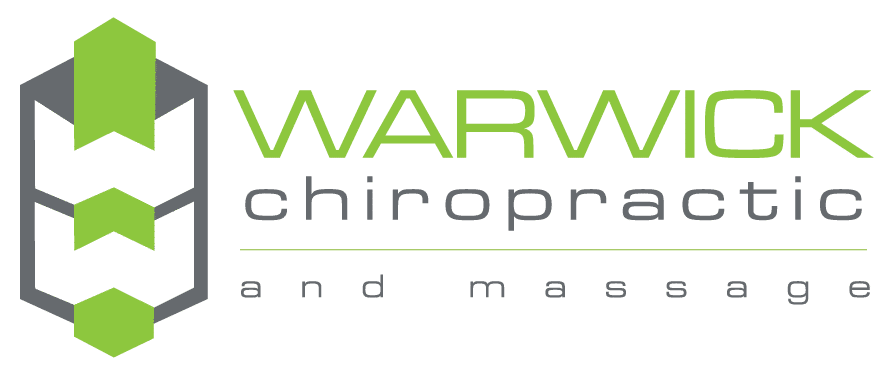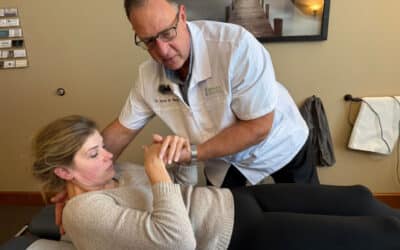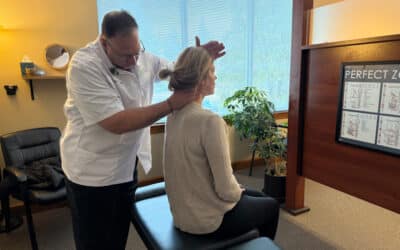Are you suffering from back pain? Do you want relief, but don’t want to take medication or have surgery? Then this article is for you! You can help find relief in five simple steps and start feeling better fast.
Back pain can be debilitating, making it hard to enjoy life’s everyday activities. It may cause insomnia and limit your ability to concentrate. But with some simple lifestyle changes, you can find relief without expensive medical treatments.
In this article, we’ll show you how to relieve back pain in five easy steps. We’ll explain the causes of back pain and give tips on how to reduce your symptoms and get quick relief. Read on for everything you need to know about relieving back pain today!
Causes Of Back Pain
Back pain is a common problem that affects people of all ages. It can be caused by many different things, including poor posture, lack of exercise, improper lifting techniques, and even stress. In some cases, the cause of back pain is unknown. However, understanding the potential causes can help you manage your pain better.
One of the most common causes of back pain is poor posture. Sitting or standing in one position for too long can lead to strain on the spine and muscles in your back. Poor posture can also lead to joint stiffness and muscle spasms. Additionally, if you are constantly slouching or hunching over your desk or while driving, it can put strain on your neck and upper back muscles which often leads to pain.
Another common cause of back pain is lack of exercise. Not getting enough physical activity weakens the muscles in your back and core which can leave them more susceptible to injury and strain. Regularly exercising helps strengthen these muscles so they’re better able to support your body weight and handle everyday activities without straining or causing discomfort.
Lastly, stress can be a contributing factor to back pain as well. Stress hormones such as cortisol cause tension in the body which leads to tightness in the muscles and joints resulting in stiffness and aches throughout your body including your back. Taking time each day to relax and do activities that reduce stress such as yoga or meditation can help relieve this tension from the body and reduce symptoms of back pain.
Signs And Symptoms
Back pain can manifest in many different ways. It may be a dull, throbbing ache or a sharp, stabbing sensation. You may feel it in your entire back or just one specific area. Pain can also radiate down your leg and into your foot which is known as sciatica. In addition to physical pain, certain conditions may cause back pain to come on suddenly and unexpectedly with no clear cause.
If you have any of the following symptoms along with back pain, you should see a doctor right away: numbness or tingling in the extremities; fever; loss of bowel or bladder control; unexplained weight loss; weakness in the lower body; chronic coughing or sneezing; difficulty standing up straight; and severe, unrelenting pain that gets worse over time.
It’s also important to talk to us about any persistent back pain so we can help diagnose the source of the problem and recommend a course of treatment that best suits your needs. With proper diagnosis and treatment, most people can find relief from their back pain and get back to leading a normal life again.
Risk Factors
Risk factors for back pain can vary from person to person. They include age, lifestyle habits, and existing medical conditions. Age is a major factor in determining the risk of back pain. As people get older, their bodies become less flexible and more prone to injury. Lifestyle habits such as smoking, lack of exercise, and poor posture can also increase the risk of developing back pain. Lastly, existing medical conditions such as arthritis or osteoporosis can cause or worsen existing back pain.
In addition to these risk factors, there are certain activities that can increase the likelihood of developing back pain. These activities include heavy lifting, long periods of sitting or standing without breaks, repetitive motion tasks such as typing on a computer keyboard for long periods of time without rest, and participating in contact sports or other extreme physical activities.
Having knowledge about risk factors for developing back pain is important because it allows individuals to identify behaviors that could put them at greater risk for developing chronic back pain and take steps to avoid these behaviors or take preventative measures to reduce their chances of experiencing back pain. Taking preventive measures now can help ensure that individuals maintain a healthy spine throughout their life.
Diagnosis
It’s important to get a proper diagnosis of the cause of your back pain before you start trying to relieve it. You should see us to assess your condition and identify the source of your pain. We may recommend imaging tests, such as X-rays or MRIs, to diagnose any underlying issues.
We will do a full examination, including range of motion and strength tests, to determine which muscles are affected and the best treatment plan for you. We may also discuss possible lifestyle changes that could help relieve your symptoms.
Once a diagnosis has been made, you can begin working with us on an appropriate treatment plan. This plan should include stretching exercises, strengthening exercises and other treatments depending on the source of your pain. With time and dedication, you’ll be able to manage your back pain effectively and reduce its impact on your life.
Proper Posture
Now that you know how to properly diagnose your back pain, the next step is to understand how you can relieve it. Proper posture is one of the most important steps in helping to reduce back pain and improve overall health. To do this, there are a few simple things to keep in mind.
The first step is to make sure you’re standing up straight. A good rule of thumb is to imagine a string from your ears running down through your shoulders, hips, and all the way down through your feet. Keeping this imaginary string taut will help ensure that your body is aligned properly. Additionally, be mindful of where your head is positioned – keep it up and in line with the rest of your spine for the best results.
When sitting for extended periods of time, try and maintain the same level of spine alignment as when standing. It’s especially important to pay attention to where your hips are positioned; they should be higher than your knees and supported by a chair with good lumbar support or a cushion if necessary. Taking periodic breaks throughout the day will also help alleviate any potential discomfort that may arise from prolonged sitting.
These simple tips will go a long way towards reducing any existing back pain while also preventing future problems from occurring. With proper posture being such an important factor in maintaining a healthy back, it’s worth taking the time to familiarize yourself with these guidelines so you can live comfortably without worrying about experiencing pain or discomfort again.
Exercise And Stretching
Exercising and stretching is a great way to relieve back pain. Regular exercise can help improve strength, flexibility, and posture. It can also reduce inflammation and increase circulation. Stretching helps to loosen muscles and tendons, which in turn can reduce tension on the spine.
To get started with exercise and stretching, it’s important to find an activity that works for you. Low-impact activities like walking, swimming, or yoga are all good options. Start slowly and focus on good form with each movement to prevent further injury. Be sure to listen to your body and stop if something hurts or feels wrong.
It’s also important to stretch regularly – especially after exercising. Focus on stretching the areas that feel tightest or most painful first. Hold each stretch for 10-30 seconds and repeat until the area begins to loosen up. It may be helpful to use a foam roller or massage ball for extra relief on problem areas as well.
By committing to regular exercise and stretching, you should soon start noticing a decrease in back pain symptoms over time. With consistent effort, you can eventually achieve relief from chronic back pain without medication or surgery!
Hot And Cold Therapy
Hot and cold therapy can also be a great way to relieve back pain. Using both hot and cold therapy helps to reduce inflammation and pain by improving blood flow, allowing the body’s natural healing process to take place. Heat therapy helps relax the muscles, while cold therapy reduces swelling, numbs nerve endings, and decreases inflammation. It’s important to remember that heat should always be used before cold when treating an injury.
To use heat therapy, begin with moist heat such as a hot water bottle or heating pad set on low for 15-20 minutes at a time. You can also try taking a warm bath or shower for 10-15 minutes. Avoid using any direct heat sources such as heating pads set on high.
For cold therapy, use an ice pack or frozen vegetable bag wrapped in a towel for 20 minutes at a time. You can also try taking an Epsom salt bath for 10-15 minutes or placing an ice pack over the painful area for 20 minutes at a time with 10 minute breaks in between if needed. Be sure not to leave the ice pack on too long as it may cause tissue damage.
If you’re looking for relief from back pain, consider incorporating both hot and cold therapies into your treatment plan. A combination of these therapies can help reduce inflammation and improve blood flow while helping your body heal naturally from the inside out.
Massage Therapy
Massage therapy is one of the most popular methods for relieving back pain. It can help relax tense muscles and improve circulation to reduce inflammation and discomfort. Massage therapy can be done at home, in a spa setting, or with a professional therapist.
When using massage therapy, it’s important to understand which techniques are best for treating your specific condition. Swedish massage is often used to reduce muscle pain and tension. Deep tissue massage helps loosen tight muscles and break down knots that have formed in the affected area. Shiatsu is another popular technique that involves applying pressure to certain points on the body using knuckles, elbows, or thumbs.
All our massage therapists here at Warwick Chiropractic have experience working with people with back pain. They are knowledgeable about anatomy and able to assess your individual needs in order to provide effective relief from your symptoms. With regular visits and proper technique, massage therapy can help you achieve long-term relief from back pain.
Massage therapy can offer significant benefits for those suffering from chronic back pain, but it’s important to consult with a medical professional before beginning any new treatment program.
Medication And Supplements
Medication and supplements can be useful in relieving back pain. They work to reduce inflammation, which is often the source of the pain. Nonsteroidal anti-inflammatory drugs (NSAIDs) are often prescribed for this purpose. These medications can help reduce swelling, stiffness, and pain in the back muscles.
Prescription muscle relaxants may also be used to ease back pain. These medications target the muscles directly and help relieve spasms that can cause severe back pain. Although they provide short term relief, these medications should not be used for more than a few weeks at a time due to potential side effects.
For those who prefer natural remedies, there are many supplements available that can help with back pain relief. Some of these include omega-3 fatty acids, glucosamine, chondroitin sulfate, turmeric, and ginger. These supplements contain anti-inflammatory properties that may help reduce back pain over time when taken regularly as part of a healthy lifestyle.
It is important to consult with your doctor before taking any medication or supplement for back pain relief. Your doctor will be able to recommend the best course of action depending on your individual needs and medical history.
Professional Treatment Options
When it comes to relieving back pain, professional treatment options can be invaluable. Depending on the severity of your condition and your overall health, there are a variety of treatments you can explore. Physical therapy is an excellent option, as it focuses on strengthening and stretching the muscles that support the spine. Your physical therapist will also help you identify activities that will aggravate your pain, so you can avoid them.
Surgery is rarely necessary for treating back pain but may be recommended in extreme cases where other treatments have failed. It’s important to speak with a qualified surgeon about the risks and benefits before making any decisions about surgery.
In addition to professional treatments, lifestyle changes like improved posture and regular exercise can help reduce back pain over time and prevent flare ups from occurring in the future.
And of course, chiropractic care. Why is chiropractic care so good for back pain?
- Non-invasive treatment: Chiropractic care focuses on the use of manual manipulation and other non-invasive techniques to treat back pain, without the need for surgery or medication.
- Personalized approach: Chiropractors take a holistic approach to patient care, taking into account the individual’s overall health and lifestyle to develop a personalized treatment plan that addresses the root cause of the back pain.
- Pain relief: Chiropractic adjustments can help to alleviate pain by reducing pressure on nerves and joints, increasing blood flow and improving joint function.
- Improved mobility and flexibility: Chiropractic care can help to improve joint mobility and flexibility, which can in turn help to reduce the risk of future back pain.
- Education: Chiropractors often provide education to their patients on lifestyle changes, exercises and other techniques that can help to prevent future back pain and improve overall health.
In Summary
When it comes to back pain, it’s important to be aware of the causes and risk factors. Taking steps to prevent back pain is essential if you want to avoid regular flare-ups. Making lifestyle changes like exercising regularly, maintaining good posture and abstaining from activities that may put extra strain on your back can go a long way in helping alleviate symptoms.
Exercises like yoga and Pilates can help strengthen your core muscles and improve your flexibility, which can help reduce back pain. Additionally, natural remedies like hot and cold compresses, massage therapy and acupuncture can provide temporary relief for those suffering from acute or chronic back pain.
In conclusion, although there is no one-size-fits-all solution when it comes to how to relieve back pain, there are a number of strategies you can use to manage the discomfort. By taking proactive measures like making lifestyle changes and trying out natural remedies, you can make a significant difference in how much pain you experience on a daily basis.
At Warwick Chiropractic & Massage we have several bases covered. Through our chiropractors we can help treat and alleviate back pain using adjusting techniques including the Zone technique, to provide balance throughout the entire body. And through our massage therapists, we can help treat back pain and relieve stress and tension at the same time.
We accept insurance, we are walk in friendly (chiropractic only, massage please book an appointment) and we love helping our patients out of pain.

Dr. David Warwick, DC, is a board-certified chiropractor with over two decades of experience helping people find fast, effective relief from back and neck pain. He is the only chiropractor in Lacey, WA certified in the Zone Technique — a specialized healing method that restores balance to the body’s six systems for long-term wellness.
At Warwick Chiropractic & Massage, Dr. Warwick focuses on short-term, results-driven care, helping patients return to life without unnecessary long-term treatment plans. His clinic welcomes walk-ins and offers convenient online scheduling for modern, flexible chiropractic care.
Dr. Warwick is committed to educating his patients and the public about natural pain relief, spinal health, and how chiropractic care can be both simple and life-changing.







